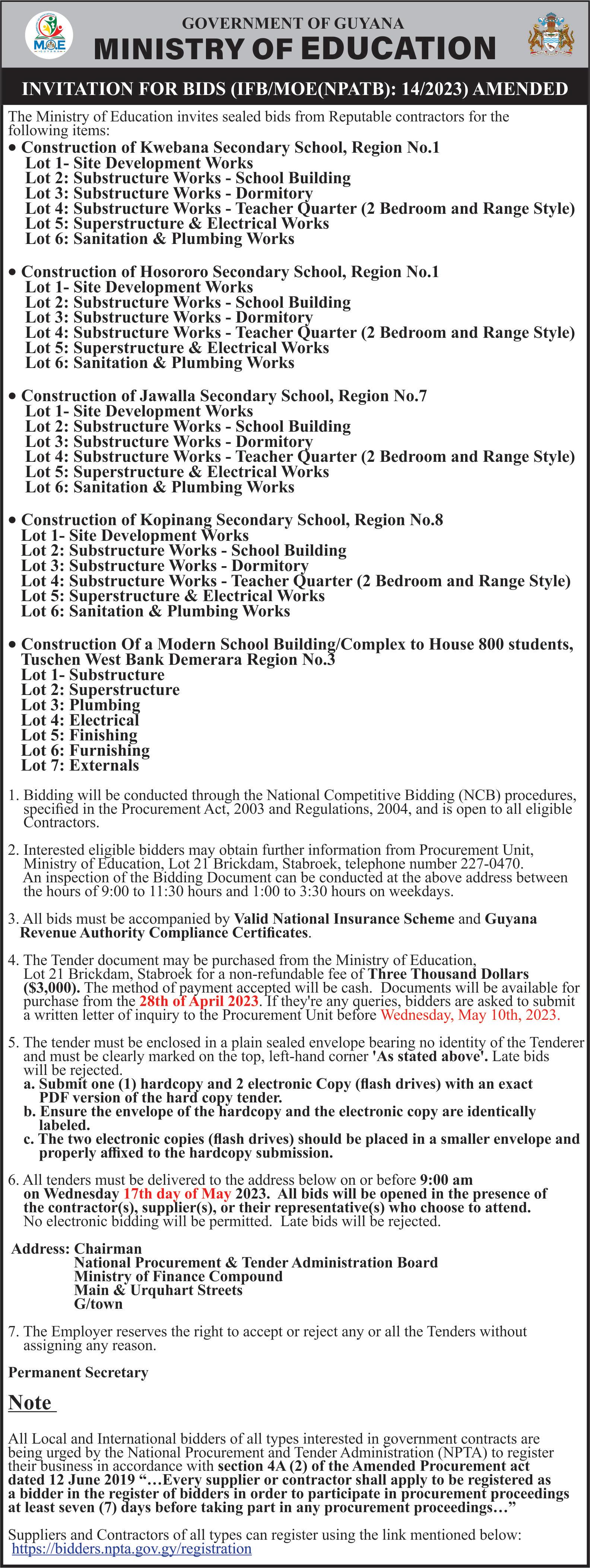
2 minute read
PARLIAMENT HAPPENINGS UNDER REVIEW THE PPP/C’S LEGISLATIVE AGENDA, MORE Government seeking approval for $31 billion in supplementary funding – Next sitting set for May 10th
Minister of Parliamentary Affairs and Governance Gail Teixeira on behalf of Senior Finance Minister Dr Ashni Singh on April 24, 2023 presented a Supplementary Bill comprising Financial Papers
Number 1 and 2 to the National Assembly relating to programme components of the Low Carbon Development Strategy (LCDS) 2030 to be financed from carbon credit inflows.
Advertisement
Work began in 2009 with the original Low Carbon Development Strategy– the first such strategy from any developing country in the world. A national consultation from October 2021 to July 2022 saw the original LCDS expanded and en - hanced, culminating in the endorsement of the National Assembly and then the finalization of LCDS 2030.
In November 2022, Guyana issued the world’s first jurisdiction-scale, sovereign carbon credits as the next phase in Guyana’s creation of a global model for forest climate services.
This was followed shortly afterwards by the world’s first sale of such credits in global carbon markets.
These carbon credit inflows are being allocated to programme components of the Low Carbon Development Strategy 2030 and come on the heels of the Government of Guyana’s engagement in further consultation over the last three months to determine the structure of the two disbursement channels outlined in the LCDS 2030:
• Disbursement Channel 1:
Village-Led Investments: After the seven-month national consultation on LCDS 2030, it was agreed that 15 percent of all revenues received from the sale of carbon credits would be paid directly to indigenous and local communities across Guyana. For the year 2023, this totals US$22.5 million or G$4.7 billion and is catered for under Financial Paper No 1 of 2023.
Over January to February 2023, the National Toshaos Council, the national body of elected Village Leaders from across all ten regions of Guyana, led engagements which determined a structure for the allocation of these carbon credits payments. This structure centers on the determination of payments, based on population, and includes villages (both titled and untitled areas), communities, and satellites. Indigenous villages and local communities will define for themselves their priorities of economic development initiatives of social upliftment, on climate adaptation and mitigation and food security that need to be advanced for village sustainability to be fostered. Village level governance structures are empowered through the Amerindian Act 2006, to deliver on village sustainability plans, outlining the short, medium and long-term priorities for each Village.
These plans outline how villages, through a process of self-determination and autonomous management, will identify and implement actions to develop village livelihoods whilst addressing the impacts of climate change. It is intended that long-term carbon credits financing, will see flows of revenues to villages and communities from this year 2023 and onwards into the future.
• Disbursement Channel 2: 85 percent of earnings from the sale of carbon credits, so far to a total value of US$127.5 million or G$26.5 billion for the 2023 allocation. This will meet the most urgent priorities of low carbon development, as well as climate adaptation and mitigation interventions outlined by the LCDS 2030 which is being sought under Financial Paper No 2 of 2023.
Advancing low carbon development while addressing the impacts of climate change is a core focus of this investment, and attention will be aimed at supporting the strong stance that Guyana has maintained nationally and globally on forest governance and management, and forest legality.
Guyana’s exemplary forest management systems, strong codes of practice, and maintained high forest cover and low deforestation rates have been recognized by programmes such as the European Union’s Forest Law Enforcement Governance and Trade Initiative.
The Government will continue to work with all stakeholders in the implementation of these programmes – implementation that will see this first series of investment made under LCDS 2030, bringing about impactful results on sustainable livelihoods and low carbon development across all spheres of society.
The paper is expected to come up for approval at the next sitting of the House, which is scheduled for May 10, 2023.






